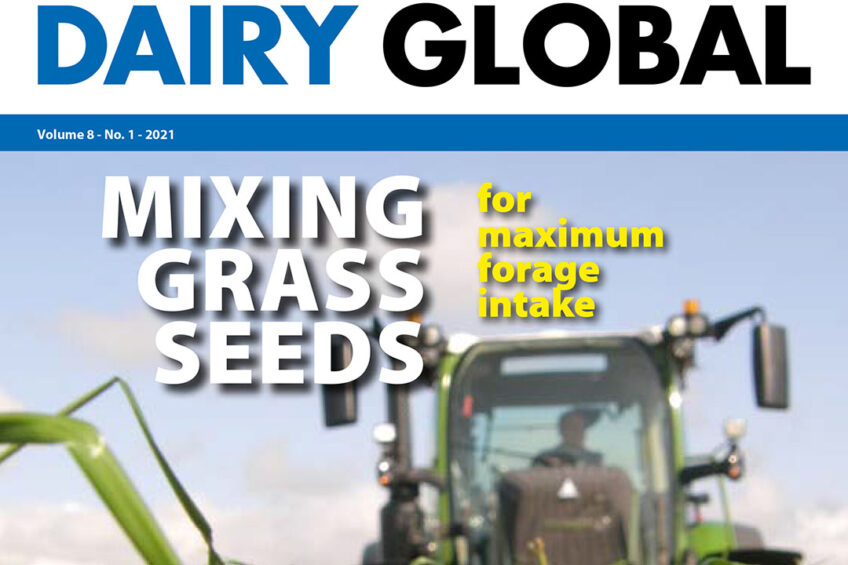Dairy Global edition 1: From Eurotier to Russia

This first magazine edition of 2021 takes you on a journey through fighting mastitis to mixing seeds for higher forage intake. From notable innovations to keep an eye out for to digging deeper into the opportunities and challenges in Russia’s sector. It’s all in this packed edition!
View Dairy Global’s digital magazine here
EuroTier innovations: Progressing the dairy sector
The EuroTier 2021 Innovation Awards have been announced, with 1 gold and 7 silver medals awarded. Hanskamp AgroTech BV scooped gold for the dairy sector innovation. Here we pick some innovations to look out for. The biennial animal husbandry show was held online-only due to Covid-19 and took place 9–12 February 2021. Page 8

Turkish farms harmed by fluctuating currency
One of the current main challenges for dairy farmers in Turkey is the fluctuating value of the local lira currency, which has bumped up input costs and forced some farms into bankruptcy. Page 12

Tackling mastitis the right way
Mastitis is considered to be one of the most costly dairy cattle diseases, making it highly relevant to dairy farmers. The economic impact of poor udder health cannot be underestimated. Page 14

Mixing grass seeds for maximum forage intake
Dairy farmers know very well that fresh grass is the cheapest form of feed needed for their cows to produce quality milk at a profit. However, cows can be quite fussy eaters, and farmers need to ensure they make the right choices when picking grass seed varieties and mixes. Page 16

View Dairy Global’s digital magazine here
Mastitis: How can data help in making the right decisions?
“Big data” is a concept that dairy farms can use to improve their decision making. Lorena Nodar, an expert on ruminant health and data analysis at HIPRA, explores this and the importance it has for preventing bovine mastitis. Lorena Nodar, an expert on ruminant health and data analysis at HIPRA, explores this and the importance it has for preventing bovine mastitis. Page 18

Reducing mastitis during the dry period
How to approach mastitis control? A recent Agriculture and Horticulture Development Board (AHDB) webinar shed some light on reducing mastitis during the dry period particularly. Page 19
Selecting for low emission cows
Methane emission is a heritable trait, which makes selection for lower emitting animals possible. Recent research with Danish Holstein dairy cattle shows the impact of a multi-trait approach to achieve high selection accuracy of lower methane-emitting animals. Page 20
Exploring the benefits of perennial legumes
The perennial legumes lucerne, red clover and white clover tend to increase nutritive value and milk production response of grass-based diets. That is an outcome of research by the 3030 Project, an initiative of Dairy Australia. Page 24

How the dairy market in Russia is developing
During 2020, the dairy market in Russia further progressed in breaking the drawdown that has dominated the sector for 6 years since the embargo announcement in 2014. The embargo cut the dairy market by about 45% in value and reduced the number of imported products by half. Page 28
Russia’s strategy to tackle mastitis and antibiotics
Russia is looking for new ways to deal with mastitis as the country is increasingly looking to curb veterinarians’ use of antibiotics. It is also looking into designing novel types of bacteriophages. Page 30

Influencing rumen microbes improves nitrogen efficiency
Feed additives can increase nitrogen efficiency and decrease NH3 emissions. Proper rumen function, the right protein–energy balance in the rumen and more intestinal digestible protein can also help. Page 32

To read the full articles, simply click on the digital magazine section and then on Dairy Global 2021-1. Registration is free.
Join 13,000+ subscribers
Subscribe to our newsletter to stay updated about all the need-to-know content in the dairy sector, two times a week.










